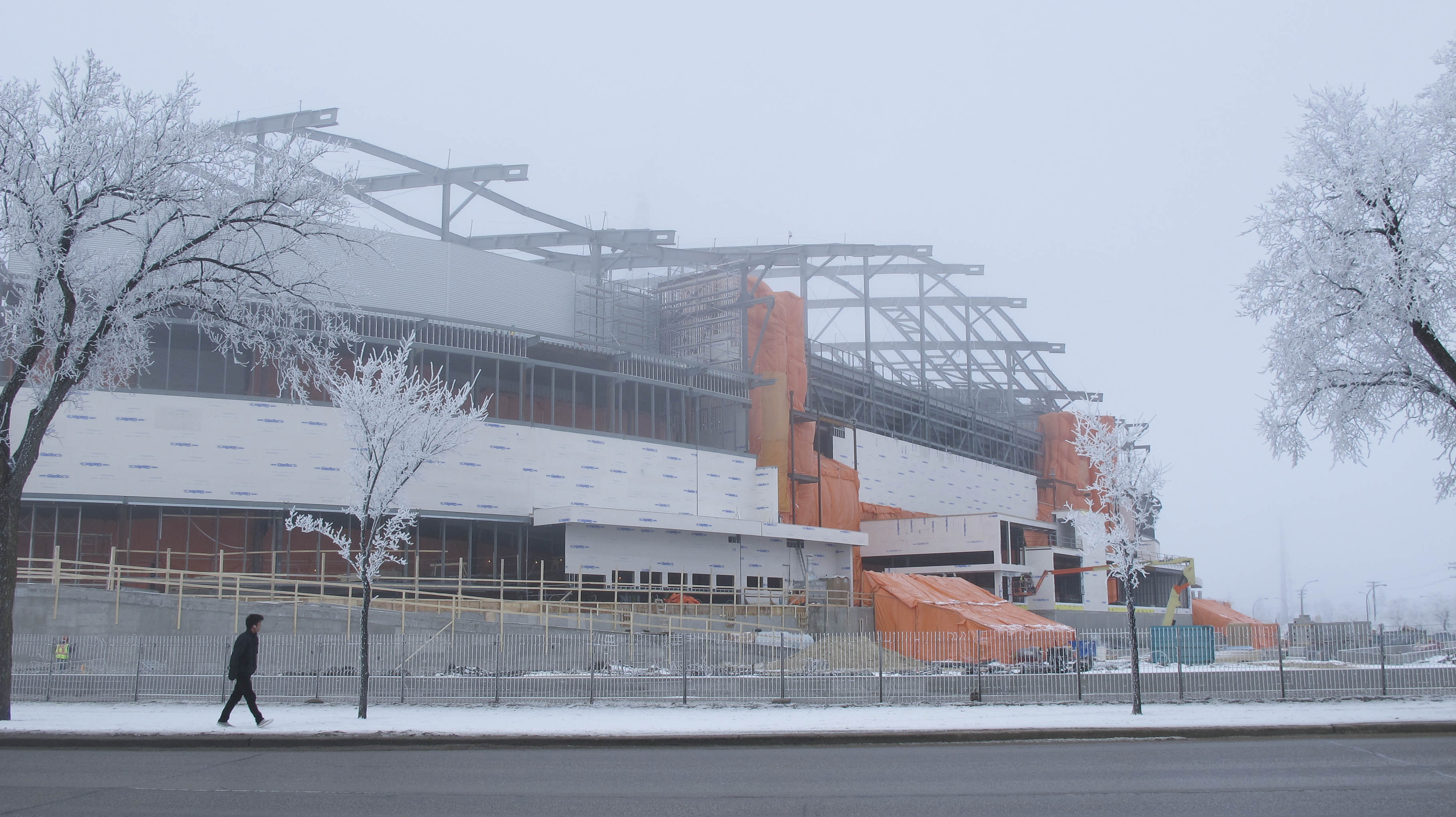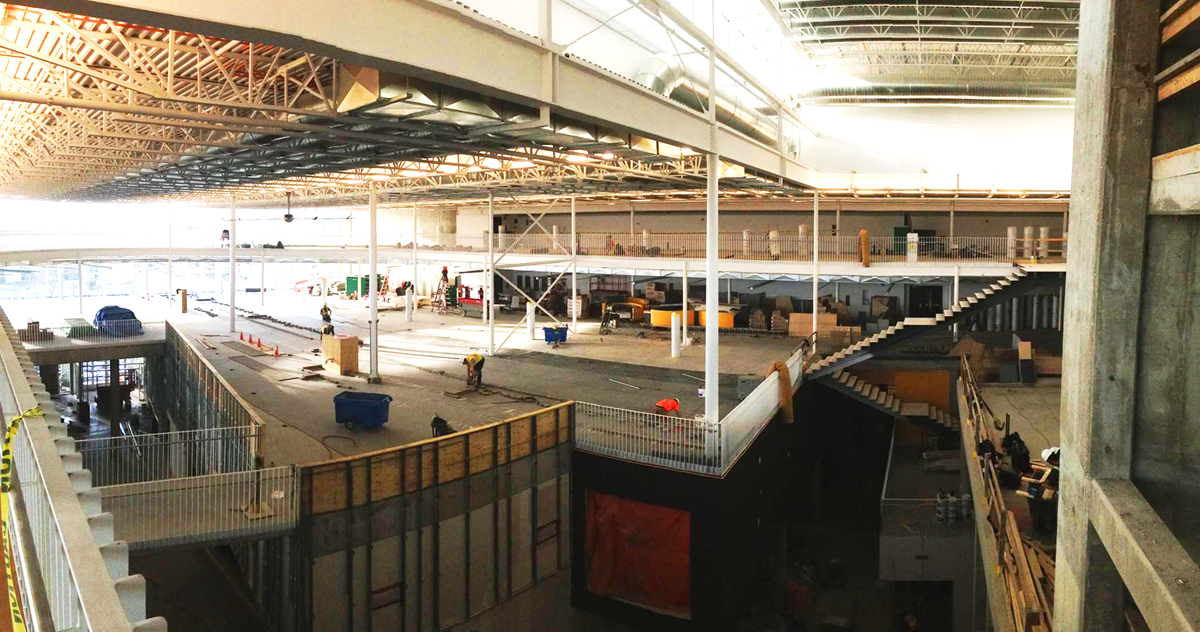Dozens of students and staff at the University of Manitoba showed up at an open house hosted at the U of M Feb. 29, to hear details from university officials and representatives from Investors Group Field on the event day plan for the new Blue Bombers stadium.
On event days at the new stadium, only students and staff with a university issued parking pass will be permitted to drive on to campus, and only allowed to park in the A, B, L and N lots.
Approximately 1,600 spots have been reserved for students and staff not attending games or other events at the stadium, compared to 5,970 for ticket holders.
According to the Investors Group Field website, it is estimated that 85 per cent of game attendees will drive to the stadium.
While approximately five per cent of attendees to the former Canad Inns Blue Bomber stadium took transit to the stadium, the Investors Group Field partners are aiming to increase the percentage of people that take public transit to the stadium to 15 per cent.
This will be done by placing a focus on car-pooling and transit usage, as well as active transportation — including up to 300 stalls for bicycles.
The City of Winnipeg, University of Manitoba, Winnipeg Blue Bombers and BBB Stadium Incorporated developed the plan.
Alan Simms, associate vice-president (administration) of the U of M, explained that the university had conducted a survey over the summer to determine the maximum number of cars on university surface lots during evenings and weekends.
The survey found that there were a maximum of approximately 1,200 cars, he explained.
“We feel [there is] more than enough [parking] for the average needs, during any conference,” he said.
Simms explained that the U of M is consulting with students and staff to determine if there are conflicts with certain dates, but that the core of current plan is not likely to change.
“The core principle, that there’s a specific allocation to the Bombers, and there’s a specific allocation to the university community during these times and dates, would remain,” he said.
“It’s hard to mess with that, because we’ve promised these spaces to the Bombers, they’re reselling them to their fans, they need to know those spaces are available.”
Mark Stewart, UMSU representative for the Residence Students Association Council (RSAC), said that he was very concerned that the plan would limit his access to campus, and felt that it was not taking into account the needs of students.
“I’m a res kid, and that’s my home, and they’re basically saying ‘Bomber Stadium’s here, come back in a couple hours,’” he said.
“I’m paying a decent chunk of change to live here, and I’m finding out that the stadium takes priority. I understand that it’s only nine times a year . . . but it seems like we’re expected to sort of roll with it, and it’s a scary precedent to set.”
Camilla Tapp, president of the University of Manitoba Students’ Union (UMSU), said UMSU will be submitting a document to university officials with comments and concerns from students about the plan.
One of UMSU’s biggest concerns is that the plan could limit access for students who can’t afford a parking pass, she said.
“I think the concerns that students have raised to me have been pretty severe about access to their campus that they’re paying into,” she said.
“I don’t think that that’s really going to be addressed by this plan because it’s saying you can’t enter campus if you don’t have a pass.”
Cam Morrill, president of the University of Manitoba Faculty Association, said that he was disappointed by the open house event because it demonstrated that the plan is essentially finalized.
Morrill previously told the Manitoban that he is concerned the plan may complicate scheduling exams and cause problems for faculty who need to work on campus during evenings and weekends.
“I’m not sure exactly how many of our members have parking spots, but there’s a bunch of them, and suddenly they’re changing the rules. That’s going to be a big problem for us,” he said.
“I thought [the open house] would be for consultations so that we could actually talk about it, but this seems like more of an announcement.”
Staff working for Bison Sport and Active Living, however, said that while the plan may cause some complications for them, they felt the addition of the new stadium to the U of M campus would be an overall positive change.
Debbie Gajadhar, scheduling coordinator for Bison Sport and Active Living, said the plan will mean that her department will have to adjust scheduling of classes and other activities hosted at the U of M.
“There’s an adjustment period that we’re all going to have to go through, and I imagine it’s going to be a difficult one, but we’ll get through it. The big picture here is we’re gaining an active living building . . . we’re gaining so much, that our return on this is a big one, and it’s worth it to make the changes,” she said.
Ken Snider, coordinator for the Max Bell Centre and University Stadium, said that he may lose some revenue on game days that he would have received in rentals in Max Bell or the Stadium, but otherwise felt “this is all an upside.”
He pointed out that Bison athletes will now have access to updated facilities in the new stadium.
“For me the upside is that finally the Bison football team will have a stadium that they can play in that’s actually built for football. Our existing stadium was built for soccer, so it really wasn’t a good football venue,” he said.
In response to concerns over the plan limiting access for students due to the stipulation on parking passes, Simms said the university should have enough to meet demands for passes, and that he felt they were relatively affordable compared to other rates in the city.
“A parking pass of less than $70 a month is very low, and if you have to park downtown, it’s much, much more. The University of Winnipeg, if you’re parking in that area , it would be much, much more,” he said.
“I certainly wouldn’t see it as being an expensive permit allocation.”
He argued that despite some of the complications the plan may cause, the addition of the new stadium will have an overall positive effect on the university community.
“The first game is going to be tough for everyone to get their heads around . . . but in the long run, this is very, very positive for the university,” he said.
“Once we get our heads around this change that’s required for some dates, I think we’re just going to have an astoundingly good story here.”




